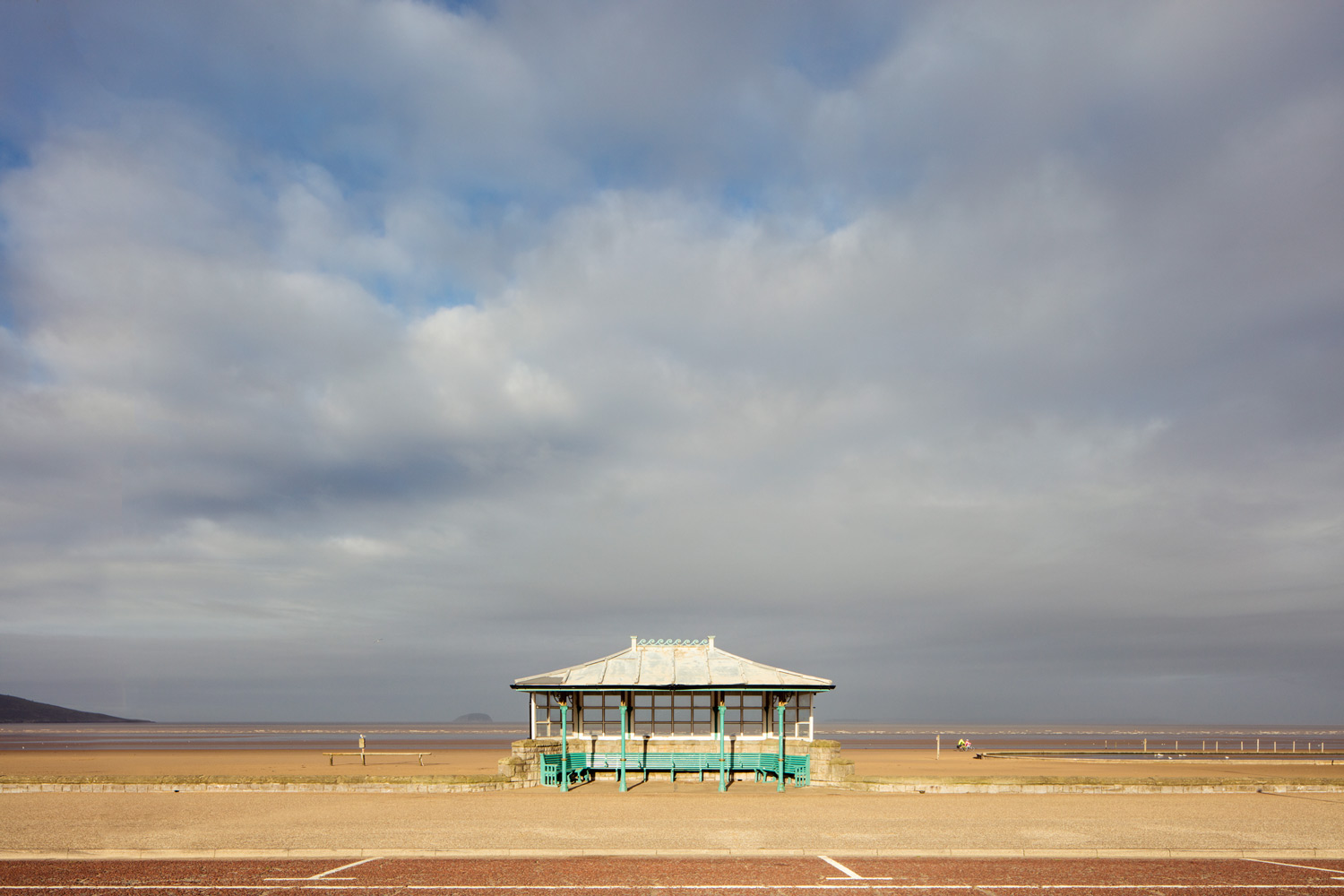Shooting the faded glory of Britain’s seaside shelters
- Text by Niall Flynn
- Photography by Will Scott

Picture the scene:
You, your entire family and at least three inflatables, packed like sardines into a four-door saloon, hurtling down the motorway on your way to the beach. The sun’s shining, there’s not a cloud in the sky and your sister’s well on her way to being off her head on travel sweets. Life’s grand.
Except, of course, when you get there, it rains. It rains like its angry. A biblical kind of rain, so nasty and relentless that you forget what it was like to ever feel truly safe. Your sister is crying. You want to go home, but your parents won’t budge. “Well, we’re here now,” says your mum, resolute as the wind shakes the car. “We might as well try and enjoy it.”
Chances are, if you grew up in the British Isles, the fated trip to the seaside is something you know all too well. It’s a rite of passage: journeying across the country to find a beach, only to get there and moan about the weather.
For photographer Will Scott, Britain’s relationship with its seaside towns has always been a point of fascination. Raised in North Berwick, Scotland, he’d grown up witnessing it first-hand. However, it was only stumbled across some images of beach shelters – bygone structures, built to protect holidaymakers from the elements – that he saw the opportunity for a project.
“I knew straight away it would work as a series and when I realised it hadn’t been done before, I made a list and started shooting them,” he explains. “I think the fact that they are so small – and often one-offs – makes them really interesting individually, as they are so unique. And as a set, it’s fascinating seeing the differences between eras and towns.”
Over the course of three years, Scott travelled across Britain, hopping from town to town. Today, the photos make up Seaside Shelters, a book (and accompanying exhibition) that maps his journey via the structures he shot.
For him, the structures depict a faded glory: a time when urban development didn’t answer to a grand plan, and where one person find themselves responsible for shaping the aesthetic of an entire town’s seafront. Above all, though, the project is an ode to the Great British holiday – rain and all.
“In an age when much of our urban built environment is becoming more uniform I think its important to recognise the places that are retaining their own character and I think that the shelters often do reflect ‘their’ towns,” Scott adds. “Brits love to moan about the weather, too hot, too cold, too wet – and the shelters existence is based on the UKs changeable weather.”
“I remember going on family holidays, always [in] the UK, and it didn’t really matter what the weather forecast was. If you decided you were going to the beach, you went. I shot it with a similar mindset!”



 Seaside Shelters is available now from HENI Publishing.
Seaside Shelters is available now from HENI Publishing.
The exhibition is showing at HENI Gallery from 20 July – 19 August, 2018.
Enjoyed this article? Like Huck on Facebook or follow us on Twitter.
Latest on Huck

In the ’60s and ’70s, Greenwich Village was the musical heart of New York
Talkin’ Greenwich Village — Author David Browne’s new book takes readers into the neighbourhood’s creative heyday, where a generation of artists and poets including Bob Dylan, Billie Holliday and Dave Van Ronk cut their teeth.
Written by: Cyna Mirzai

How Labour Activism changed the landscape of post-war USA
American Job — A new exhibition revisits over 70 years of working class solidarity and struggle, its radical legacy, and the central role of photography throughout.
Written by: Miss Rosen

Analogue Appreciation: Emma-Jean Thackray
Weirdo — In an ever more digital, online world, we ask our favourite artists about their most cherished pieces of physical culture. Today, multi-instrumentalist and Brownswood affiliate Emma-Jean Thackray.
Written by: Emma-Jean Thackray

Meet the shop cats of Hong Kong’s Sheung Wan district
Feline good — Traditionally adopted to keep away rats from expensive produce, the feline guardians have become part of the central neighbourhood’s fabric. Erica’s online series captures the local celebrities.
Written by: Isaac Muk

How trans rights activism and sex workers’ solidarity emerged in the ’70s and ’80s
Shoulder to Shoulder — In this extract from writer Jake Hall’s new book, which deep dives into the history of queer activism and coalition, they explore how anti-TERF and anti-SWERF campaigning developed from the same cloth.
Written by: Jake Hall

A behind the scenes look at the atomic wedgie community
Stretched out — Benjamin Fredrickson’s new project and photobook ‘Wedgies’ queers a time-old bullying act by exploring its erotic, extreme potential.
Written by: Isaac Muk